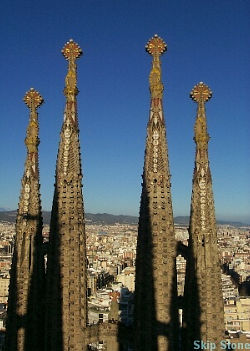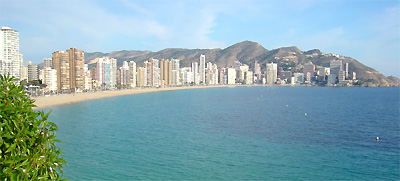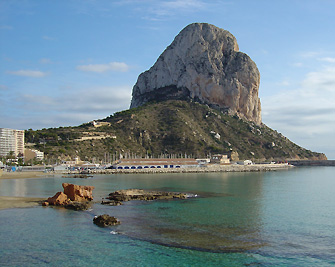We love Spain so much we created this short video to share a bit with you about the many wonders to be found there.
Travel along with the Hip Guide to Spain and visit Barcelona, Calpe, Moraira and more!

We love Spain so much we created this short video to share a bit with you about the many wonders to be found there.
Travel along with the Hip Guide to Spain and visit Barcelona, Calpe, Moraira and more!
La Semilla “the seed” is a little hippy haven tucked away in stunning mountains on the coast of Andalucia, with views to Morocco. It is a cultural association hosting several music/art workshops throughout the year, as well as being open at weekends in the summer as a vegetarian and organic restaurant. Prices are moderate, but if you love quality vegetarian food you may just find the meal and the views over the mountains and ocean to Morocco an overwhelmingly wonderful experience.
the Alpujarra is a series of beautiful white-washed Andalucian-moorish villages high up in the mountains, producing loads of crafts like ceramics, rugs and strange little herbal tinctures and liquers. There’s a magical mix of influences in this area – the Arab touch from the previous Moorish settlement, a Buddhist monastery and retreat near Trevelez, open to visitors, a Mongolian gentleman selling yurts on the roadside…and near the village of Orgiva is a tipi community in a hidden valley, stop-off point for many new age travellers and home to many a full moon gathering. Alternative spirits are drawn to this area because of the beautiful mountains, valleys and springs, and the rich history.
Info:
Address:
Granada
Phone:
San Pedro is apparently the remnants of what was once a port nestled in the cliffs of Cabo de Gata, Andalucia. It was discovered and is now the home to several permanent residents and many, many other travellers from all over Europe and the world, who may pass by. It is completely unreachable by vehicle – only accessible via a 1hr walk (scenic is an understatement) along the cliffs from the nearest village, las Negras.
A magical blend of starlight nights, mountains, and sea. Trust me, lying under the stars will make no other starry sky seem quite as black and as speckled with stars as this vision. White washed houses trail the mountainous paths where the winding roads travel high on cliff edges. The vegetation here is so green.apparently anything grows on this land, after all, it’s known for it’s Spring climate all year round ( Gotta taste the warm rain and smell the moist ground.delight! )
Visit Barcelona’s Las Ramblas and enjoy some of the colorful street entertainers that line the walkway to the sea.

People will finally be able to worship in La Sagrada Familia, Antonio Gaudi’s beautiful church in Barcelona, after the Pope dedicates it this Sunday. The church has been under construction for 128 years, and will require many more years before completion.
Lanzarote – the eastern most Canary Island – is home to some of the most unusual real estate on the planet. Thanks to a cataclysmic volcanic eruption – which lasted six years from 1730. Which covered one quarter of the island in solidified lava – so forcing a serious re-think about how to construct homes and houses.
This unique architectural approach is today best epitomized by the incredible home of the island born artist and architect Cesar Manrique – owner of what is undoubtedly the most famous and surreal property in Lanzarote.
Back in the 1960´s Manrique created a house within a series of five volcanic bubbles, which still blows visitors away to this day. This ingenious feat of architecture was Manrique´s first major piece of work on Lanzarote and encapsulates his organic approach and desire to create a perfect symbiosis between man, art and nature.
In the early 1960´s Manrique was studying art in New York and rubbing shoulders with the likes of Andy Warhol. But as tourism started to take off back on his native island he felt the urge to return. Afraid that his beloved Lanzarote could be buried beneath a sea of four star hotels and apartments. As had happened in other Spanish sun spots.
Manrique discovered his site by walking the lava fields that surround much of Tahiche. A small village, which is centrally located on Lanzarote. Here, the green tip of a fig tree caught his eye growing just above the sea of black volcanic rock. And on closer inspection he found that this emerged from one of five large bubbles that had been created within the flow.
Work commenced, the five underground chambers were interconnected, and by the end of 1968 Manrique´s creation was complete. Providing him with the perfect work and exhibition space and Lanzarote with a blueprint for future development.

Located 45 kilometers northeast of Alicante, it’s a convenient and inexpensive place to fly into from just about anywhere in Europe. Benidorm is known for it’s white sand beaches and nightlife, albeit Las Vegas-style.
